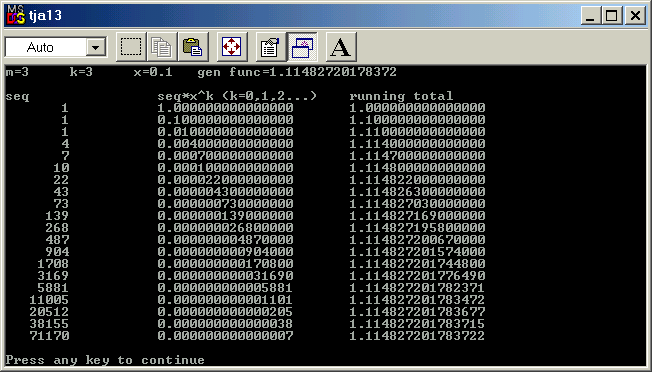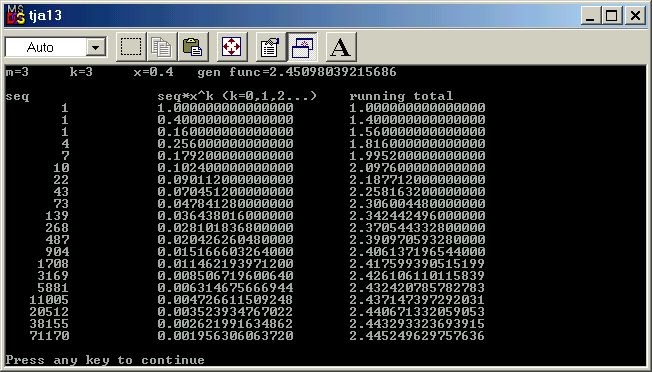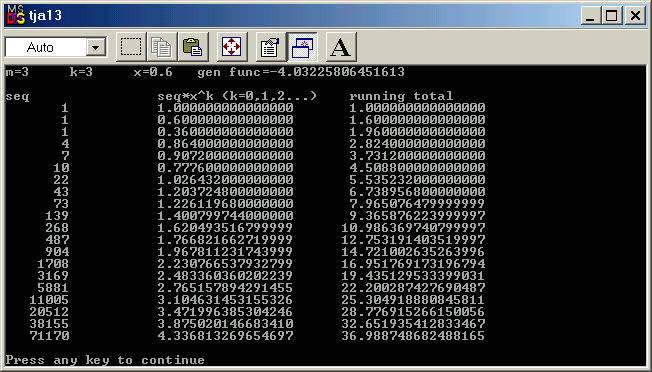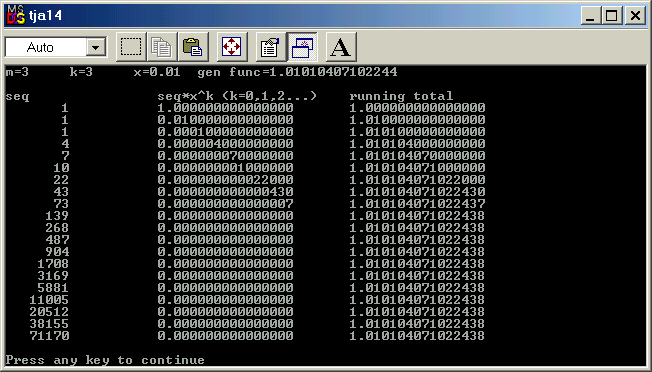
At this point, my knowledge of creating webpages consists of linking, adding images and getting things posted. This primitive page shows how a person with some computer and combinatorics skills solves a minor class of problem.
The following images are screen dumps for c++ programs I wrote to determine all the relevant aspects of the family of sequences which includes mine. The sequence itself is the left most column of the following image:

Its recursive formula is a(n)=a(n-1)+3*a(n-3). A similar recursive family is already noted at your site with formula a(n)=a(n-1)+a(n-m). These are the Lam{\'e}--hereafter Lame'--sequences, and when m=2, we obtain the world's most famous growth pattern. An interpretation of the Fibonacci numbers is with the population of pairs of rabbits without predation and with a single pair of offspring doing the same when they are 2 gestation periods old. The Lame' sequences extend this notion by having the offspring becoming parents after mperiods. My sequence extends the Lame' sequences in a different direction by allowing for multiple pairs of offspring per birth, basically, a litter. The sequence I'm submitting has the pairs per birth set at k=3.
I believe that the strongest reason to include this sequence is that it serves as an outstanding tool to understand generating functions. The generating function for this sequence is g(x)=(1-x-3*x^3)^(-1). I had trouble with the algebra. I solved it eventually, but for the purpose here I added up the first twenty terms of g(x) and compared that to my guess for the formula. The calculated value for g(x) given x is shown on the top line of these images. Compare that to the bottom right number, and the bottom right should be just a hair less. With a greater x, g(x) converged more slowly:

When x was out of the domain, we obtain absurdity:

And with very small x, we "waste time" seeing the information and we quickly reach the limits of our data types. I bet that for a lot of gen funcs--defined on our decimal system-- .1 is the "best" x.

The family of sequences of which this is an example is a(n)=a(n-1)+k*a(n-m), where k is pairs per litter and m is periods till parenthood. The generating function is g(x)=(1-x-k*x^m)^(-1). This is my first week of grad school in mathematics education. I intend to integrate your site and mine with as many technology and education opportunites as arise.
That's my 5-10 minutes. If you want to see some images for m and k not equal to 3 and an appraisal of how your site handles it, click here.